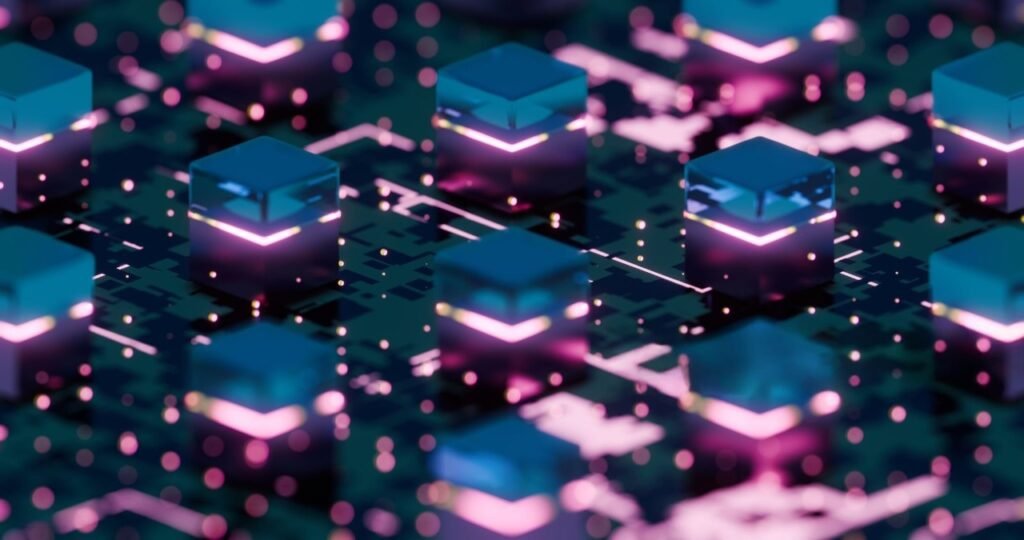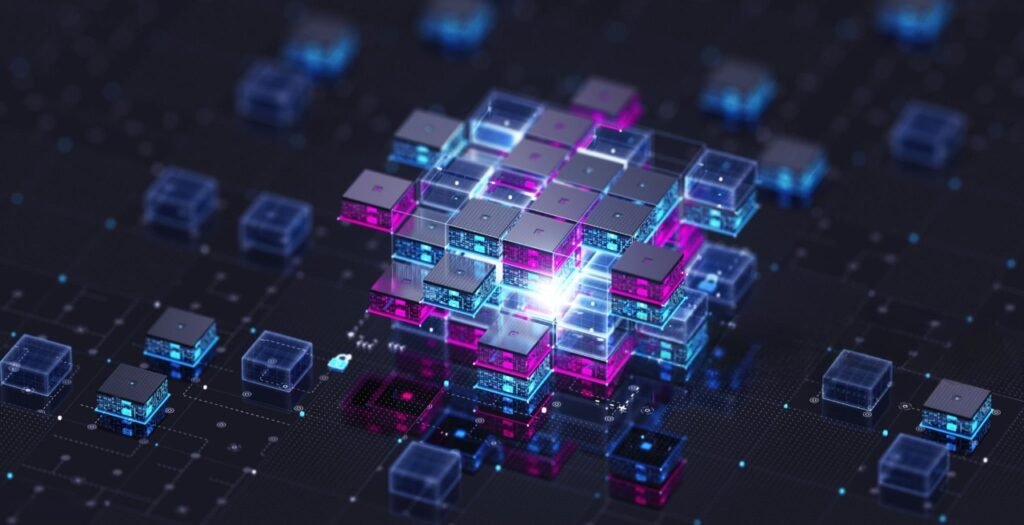What Is Blockchain: You’ve probably heard the term “blockchain” and thought, “That’s complex!” Don’t worry—you’re not the only one. Most people are daunted by all the technical jargon about it. But what if I told you blockchain isn’t reserved for computer experts or Bitcoin speculators? It’s something that may one day impact your daily life, much like the internet did.
What Exactly Is Blockchain?
Let’s begin with the fundamentals. Think of an electronic notebook that lots of individuals across the globe may access but none can modify individually. Such a notebook maintains a record of transactions ranging from financial transfers to election outcomes. That’s blockchain!
Simply put, blockchain is a common and immutable digital book, or “ledger,” of occurrences or transactions that everyone can rely on.
Why the Hype? What’s So Special?
Excellent question! Blockchain got popular because it brought something new to the table: trust without a middleman.
Typically, we trust banks, governments, or companies to keep and check records. But blockchain allows strangers to collaborate securely—no middlemen required. That’s what makes it called a “trustless” system—not that it’s untrustworthy, but that trust is embedded within the system.
The “Block” in Blockchain
Imagine every block as a digital “page” in that notebook. This block has each of the following:
- A list of transactions
- A timestamp (when it was added)
- A special code known as a hash
When a block is full, it’s closed and appended to the chain of prior blocks.
The “Chain” That Ties Everything Together
Now picture each new page in that notebook being linked to the last one—like a chain of paper clips. This is a chain of blocks, or “blockchain.”
If a person tries to alter one block, it alters its special code—and the chain is broken. That is how the system keeps the intruder from ever editing the past without everyone noticing.
A Ledger That Everyone Shares
That’s where it gets really interesting. Every single person on the network has a copy of the blockchain. So if someone is tempted to cheat and alter their version, it won’t match with anyone else.
It’s like attempting to cheat on your school test and everyone else has the answer sheet—you’ll get caught instantly!
How Does Blockchain Actually Work?

Let’s walk through it step-by-step:
- A transaction occurs (e.g., you send money to your friend).
- The transaction is broadcast to the network.
- Computers (nodes) verify if it’s valid.
- After verification, the transaction is collected in a block.
- That block gets added to the chain and becomes irreversible.
This entire process is fully automated and doesn’t need a human monitor.
Is Blockchain Just Bitcoin?
No way!
Whereas block chain began with Bitcoin, it’s now being applied in numerous other contexts beyond cryptocurrency. Consider Bitcoin like email, and block chain like the internet—email was the first large application of the internet, but today we apply it to everything from shopping to video watching.
Blockchain Applications in the Real World
Blockchain is being utilized in numerous cool and practical applications:
- Banking & Finance – Speedier, more affordable money transfers
- Healthcare – Secure patient files
- Voting – Secure ballots that can’t be tampered with
- Supply Chain – Tracing products from factory to shelf
- Real Estate – Open property records
It’s like having a superpower for record-keeping.
Is It Safe and Secure?
Yes, block chain is extremely secure—thanks to cryptography.
Each block is sealed with a secret code, and any would-be tamperer would have to rewrite every block after it—which is effectively impossible.
Also, because thousands of computers check each transaction, it’s very difficult to fake or hack.
Public vs Private Blockchains
There are two types:
- Public Blockchains (such as Bitcoin): Anyone is allowed to join and view everything.
- Private Blockchains (used by companies): Only specific individuals can view or add data.
Think of a public park vs a private club.
Pros and Cons of Blockchain
Pros:
- No middlemen = reduced costs
- Super secure and transparent
- Difficult to tamper with
- Decentralized (no point of failure)
Cons:
- Slower than old systems (temporarily)
- Consumes lots of energy (in some forms such as Bitcoin)
- Difficult to modify once something’s been added
Can Anyone Use Blockchain?
Yes! While it might take technical skills to set it up, anyone can use applications that run on blockchain, much like anyone can use a smartphone without being aware of how it functions.
Most startups and even governments are creating user-friendly blockchain services for you and me.
Blockchain and the Future
The future of blockchain is ours to claim.
Some experts think it’ll be as groundbreaking as the internet. Think of it:
- Paying without banks
- Doctors sharing records in an instant
- Artists receiving payment directly when you stream a tune
It’s all possible—and it’s already happening in some corners of the world!
Common Myths About Blockchain
Let’s set a few things straight:
- “Blockchain is just for crypto.” No way, it has numerous applications.
- “It’s anonymous and illegal.” No, many blockchains are public and trackable.
- “It’s a fad.” Blockchain is being embraced by banks, governments, and technology behemoths.
Conclusion: Why Should You Care?
Block chain isn’t merely a buzzword for tech geeks—it’s a tool with the potential to reshape the way we live, work, and interact. From transferring money to safeguarding votes, blockchain is making systems fairer, more open, and more efficient.
And the great news? You don’t have to be a technical wizard in order to comprehend or implement it. Just as you don’t have to comprehend how a car engine operates in order to drive one.
The next time you are asked, “What is Blockchain?” you will know the answer with crystal clarity.
Read more: SCrypto

